Sensors capable of detecting IR radiation include thermopiles, pyroelectrics, bolometers, and low-bandgap semiconductor photodiodes (see Thermopile Physics and Pyroelectric Physics for details). While arrays of pyroelectric sensors and microbolometers are used for thermal imaging, the use of photodiode arrays are more common (see Laser Beam Profile Measurement). This is mainly due to the greater detectivity for these types of sensors as well as the maturity of the semiconductor manufacturing processes that enable them. Since these focal plane arrays (FPAs) are made of photodiodes, their IR spectral sensitivity depends on the bandgap of the semiconductor material being used. The most common types of FPAs are constructed using InSb, InGaAs, HgCdTe and quantum-well-based photodiodes. IR-sensitive FPAs are considerably more expensive than Si-based FPAs, resulting in higher-end models being used mainly in military applications. Furthermore, detection in the MWIR and LWIR often requires cryogenic cooling to achieve reasonable detectivity levels.
Optical components play a critical role in thermal imaging both in terms of performance and cost. In particular, lenses are the most essential components for imaging (see Optical Lens Physics for more information). Some widely-used terms related to thermal imaging optics include the effective focal length (EFL), the field-of-view (FOV), the entrance pupil, and the F/# (the ratio of the EFL to the entrance pupil diameter). Generally, the main performance parameters for lenses or systems of lenses are:
- Modulation transfer function (MTF) - measures the ability to transfer (or reproduce) modulation (or contrast) in an object to the image formed by the optical component; this is a function of spatial frequency (or resolution)
- Transmission - ratio of transmitted radiation relative to incident radiation
- Relative illumination - illumination at any point on an image relative to the maximum on-axis illumination
- Distortion - image deformation caused by a change in magnification across the FOV All these parameters are a function of the optical lens design.
Consequently, lens design is crucial in terms of achieving the desired image quality. The following discusses how thermal imaging optics are designed and manufactured to meet performance requirements.
There are many lens types used in thermal imaging systems. The types of lenses chosen for a particular system can depend on (among others): the spectral range of interest, e.g., NIR, SWIR, MWIR, or LWIR, the number of FOVs required (e.g., single, dual, continuous zoom), whether or not they need to be athermal (no need for refocusing following a temperature change), and their focus mechanism, e.g., fixed, manual, or motorized. Once the system requirements are established and the lens specifications are drafted, the optical designer must supply an optical design that meets specification requirements. Additionally, the designer must be cognizant of manufacturability and cost. The stages of optical design include the following:
- Establishing the basic geometry
- Optimizing performance, fit, and cost
- Building a tolerance set
- Documenting the design and performance
The principle method of arriving at a good optical design is optimization, which is varying the numerical design parameters to achieve a desired imaging outcome such as a tight focus or a flat field. Design parameters can be extensive owing to, for example, the number of lenses involved, their shapes or curvatures, the optical materials that make up the lenses, whether there is an intermediate focus, etc.
Optimization is based on a merit function. This function can include terms that directly impact imaging performance, such as optical aberrations. It can also include terms for controlling design geometry, such as the thickness of elements or the spacing between them. The optical designer adjusts the merit function during the optimization process to achieve the design objectives, which include performance, size, and cost.
In order to complete an optimization, a designer must have a tolerance set in addition to the optical design itself. A tolerance set can include the sensitivity limits of the manufacturing process used in lens element fabrication. These tolerances might include variations in the radius of curvature, thickness, surface irregularity, and edge thickness. There are also tolerances related to the mechanical assembly of a system. These include decenter, tilt, and distance between elements.
Lenses for thermal imaging systems are made of materials with low absorption in the IR spectral region. The main materials used to make these lenses include Ge, Si, ZnS, ZnSe, CaF
2, and chalcogenide glasses. Mirrors can also be used as optical components for thermal imaging systems. These components have surfaces that are mainly made of metals, such as aluminum and copper. More information about mirrors and their surfaces can be found in
Optical Mirror Physics.
There are four main types of optical surfaces used to construct optical components: plano, spherical, aspherical, and diffractive. Plano and spherical surfaces are made to accommodate paraxial wavefronts, that is, weakly focusing geometries. Aspherical surfaces are designed to correct for wavefront errors such as spherical aberrations and therefore are more appropriate for stronger focusing geometries. Diffractive surfaces are designed to correct for chromatic aberrations.
For IR optical components, surface flatness or irregularity has a standard accuracy of λ/2 at 633 nm, which can be quite demanding at certain IR wavelengths. Surface quality standards typically require scratch and dig values of 80-50 for the LWIR region and 60-40 for the SWIR region. Surface curvatures typically require accuracies of 0.1% of the radius value or better, while standard surface roughness values are in the 25 nm RMS range. In addition to high-quality optical surfaces, lens positioning is also critical in thermal imaging systems. This can include absolute positions in the optical housing and the relative positions of two lens surfaces. Measurement tools such as high accuracy calipers, micrometers, and comparators are used to meet the required specifications.
Almost all optical surfaces associated with IR optical components are coated. The coatings serve two purposes: improve spectral performance, i.e., transmittance and reflectance, and withstand environmental conditions. Details regarding general coating characteristics and application technologies are given in Optical Coatings. Optical coatings specifically for IR optics fall into one of the following categories: high efficiency, high durability, and hard carbon. High efficiency coatings have superior spectral performance with low environmental durability while high durability coatings sacrifice spectral performance for increased environmental durability. Hard carbon coatings have single layer diamond-like coatings and possess very high environmental durability, while their spectral performance can be tailored based on the target application.
Prior to assembly of the thermal imaging system, the specification requirements are verified for all the pre-assembled parts. During assembly, all elements, both mechanical and optical, must be kept free of potentially damaging debris. The main goal is that the optical elements are properly placed according to the optical and mechanical design requirements. There are several calibration and assembly methods designed to meet these requirements which vary in complexity depending on the system. For instance, systems that are made to function in extreme environmental conditions, e.g., temperature, shock, vibrations, rain, will undergo more rigorous assembly protocols.
More sophisticated assembly and mechanical design efforts are required when optical components are no longer in fixed positions relative to one another, such as in a zoom lens. In this case, internal lenses are moved to different positions with the goal of achieving good focusing for all designed FOVs. Positioning mechanisms may either be static or dynamic and can require a high degree of accuracy with smooth movement and zero backlash to function properly. For motorized imaging systems, a controller uses an encoder along with a look-up table to properly position the lenses to achieve optimal focusing according to design specifications. IR imaging lenses are made of materials that can be sensitive to the surrounding temperature, yielding slight changes in shape and/or position with changes in temperature. To compensate for this, the controller can measure the ambient temperature and reposition the lenses to maintain optimal focusing.
As UAV technology is implemented for increasingly varied and sophisticated tasks, there has been a call to improve imaging performance. Accordingly, detector manufacturers are working on improving resolution while maintaining relatively small footprints to accommodate usage in smaller drones. While detector resolution should improve imaging performance, this must be accompanied by improvements in lens quality. See UAV Imaging Systems for additional information.
Automotive night vision systems use thermal imaging technology to allow drivers to detect pedestrians and provide a clear view of the road, even when vision is obstructed by environmental conditions such as darkness, smoke, or fog. For maximum performance and minimal collision risk, thermal imaging accuracy, quality, and long-distance object detection are critical to provide the driver with enough response time. The key to meeting these requirements is the use of high-sensitivity and high-resolution optics.
MKS Ophir has earned its reputation as a world-leading designer and supplier in the field of thermal imaging optics for the automotive market. MKS Ophir's superior athermalized lenses increase pedestrian recognition software performance, allowing a greater ability to anticipate potential hazards. Crafted with years of experience and knowledge, these IR thermal imaging lenses feature the highest quality components and materials, designed especially to meet the needs of the industry. As the sole provider of IR thermal optics for the European automotive market, MKS Ophir's lenses are integrated in the night vision systems of top European cars.
A thermal weapon sight is a device that combines a compact thermal imager and an aiming reticle. These devices can be mounted on a variety of small arms and are often used by hunters. The thermal sight can be quite useful in places when vision is obstructed by environmental conditions such as darkness, smoke, or fog. The sight makes it easy for a user to locate any source of heat, such as an animal or vehicle, against its lower-temperature background.
 Over 8,000 products in-stock! & FREE 2-Day shipping on all web orders!* Learn More FREE T-Shirt with orders $250+ Details
Over 8,000 products in-stock! & FREE 2-Day shipping on all web orders!* Learn More FREE T-Shirt with orders $250+ Details
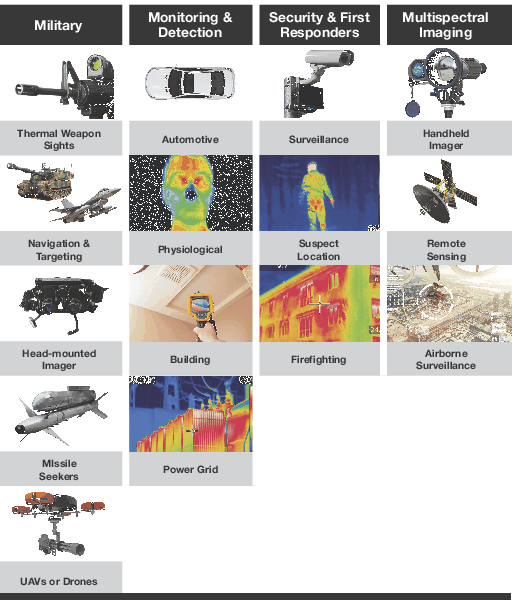
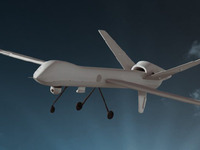
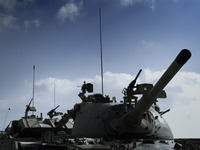

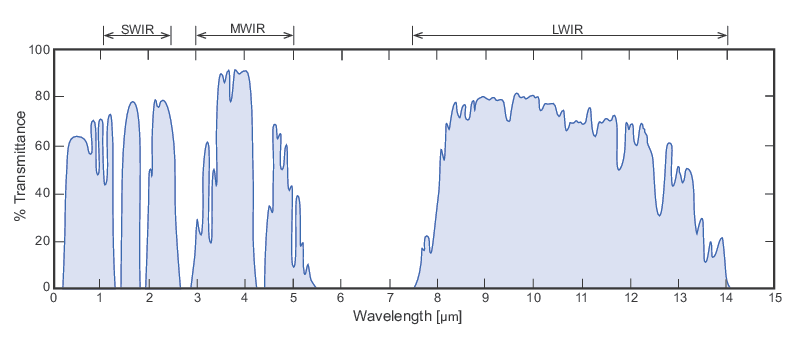
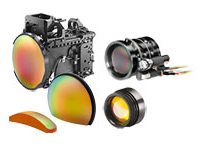
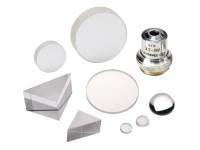

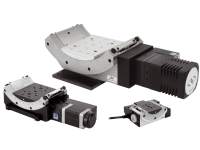

 Ultra-High Velocity
Ultra-High Velocity